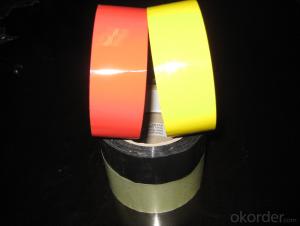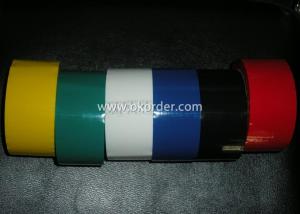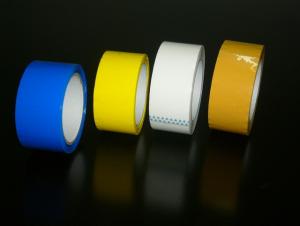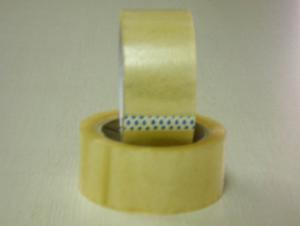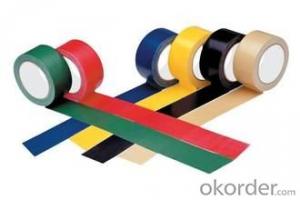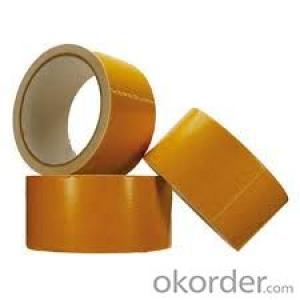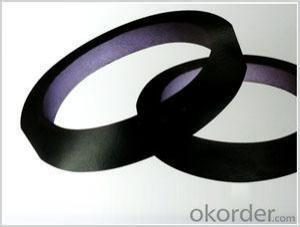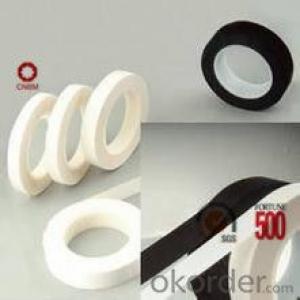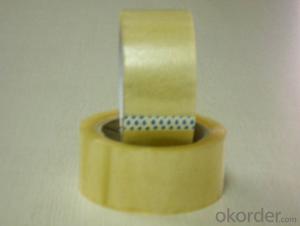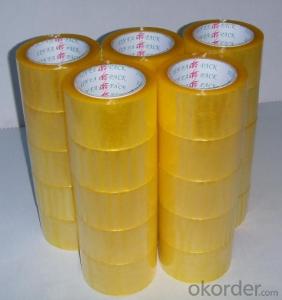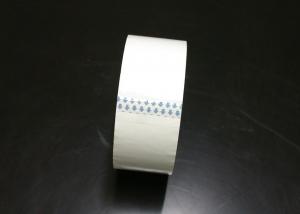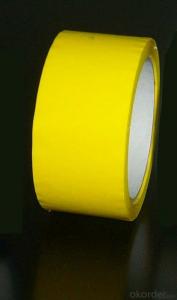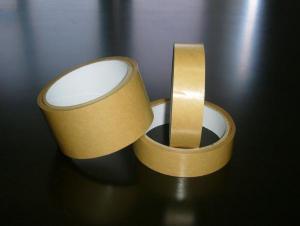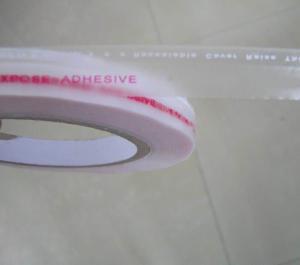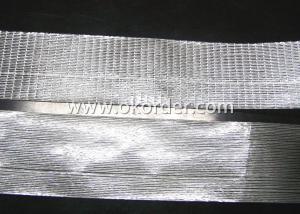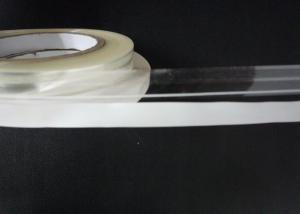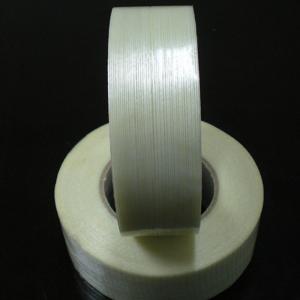3M Packaging Tape with 3 Inch Core - Thickness 45 Micron BOPP Packing Tape
- Loading Port:
- China Main Port
- Payment Terms:
- TT OR LC
- Min Order Qty:
- -
- Supply Capability:
- -
OKorder Service Pledge
OKorder Financial Service
You Might Also Like
CONSTRUCTION:
Carrier: BOPP film
Adhesive: Water based acrylic adhesive.
TYPICAL PHYSICAL PROPERTIES:
Total Thickness (adhesives + carrier): 45 ± 2 um
Initial Tack (11mm steel ball): 19#
180O Peel Adhesion (to steel): 0.6 kgf /25mm
Holding Power: 24 hrs
Tensile Strength: 35 N/cm
Elongation: ≤180%
PACKING:
Core I.D.: 3” (76mm±1)
Jumbo Roll:1280mm x 4000m
Cut Roll: As per customer’s requirements
Application:
Carton sealing & packing, Light duty packaging, bundling, holding, and other office & household use.
REMARKS:
1. The data above are typical results and subject to change without notice.
2. Tolerance: Weight and Thickness: ±10%; Width: ±3mm;
Length: Cut Roll & Log Roll ±0.3m, Jumbo Roll ±0.5%.
3. The products should be stored at room temperature and be kept away wet and/or heat source.
4. It is essential, as with all pressure-sensitive tapes, that the surface to which the tape is applied must be clean, dry, and free of grease and oil.
5. The users should take test and do trial-application on the above products before coming into application so as to witness and ensure suitability for their special purpose and technique.
- Q: Can packaging tape be used for sealing foam?
- Sealing foam can be achieved by using packaging tape. While packaging tape is commonly used for sealing boxes and packages, it can also be effectively used to seal foam. To create a tight seal, it is important to make sure that the tape is securely adhered to the foam surface by applying pressure after it has been applied. It is advisable to use a tape specifically designed for sealing foam, as these tapes usually have stronger adhesive properties and are more resistant to temperature changes and moisture. In conclusion, packaging tape can be a convenient and effective choice for sealing foam.
- Q: Can packaging tape be used for sealing plastic folders?
- Yes, packaging tape can be used for sealing plastic folders.
- Q: Can packaging tape be used for sealing sports equipment or gear?
- Yes, packaging tape can be used for sealing sports equipment or gear. Packaging tape is designed to have strong adhesive properties, making it ideal for securing and sealing various items, including sports equipment. It can help keep equipment and gear securely fastened, preventing them from coming apart or getting damaged during transportation or storage. However, it's important to consider the specific needs and requirements of the sports equipment or gear being sealed, as some items may require more specialized tapes or sealing methods for optimal protection.
- Q: How do I prevent packaging tape from yellowing over time?
- To prevent packaging tape from yellowing over time, it is essential to store it in a cool, dry, and dark place. Exposure to sunlight and humidity can accelerate the yellowing process. Additionally, using high-quality packaging tape made from materials resistant to discoloration can help maintain its original appearance for a longer period.
- Q: Does packaging tape come in different widths for different applications?
- Yes, packaging tape does come in different widths to cater to various applications.
- Q: How do I prevent packaging tape from becoming brittle?
- To prevent packaging tape from becoming brittle, there are a few measures you can take: 1. Proper storage: Make sure to store the packaging tape in a cool, dry place away from direct sunlight. Extreme temperature changes can cause the tape to become brittle, so maintaining a consistent environment can help prolong its lifespan. 2. Avoid excessive tension: When applying the tape, try not to stretch it too tightly or apply excessive pressure. This can strain the adhesive and cause it to lose its flexibility, resulting in brittleness. 3. Use appropriate tape: Different types of packaging tapes have varying levels of durability. Depending on your needs, choose a tape specifically designed for heavy-duty or long-term use. These tapes are often made with stronger adhesives and materials that are less prone to becoming brittle. 4. Handle with care: While using the tape, handle it gently to avoid unnecessary stress. Tugging or forcefully pulling on the tape can weaken its structure and lead to brittleness. 5. Replace old tape: If you notice that your packaging tape has started to become brittle or lose its adhesive strength, it's best to replace it with fresh tape. Using old and brittle tape might compromise the security of your packaging, increasing the risk of it breaking or coming undone during transit. By following these preventive measures, you can help maintain the flexibility and durability of your packaging tape, ensuring it remains reliable for your packaging needs.
- Q: Can packaging tape be used for sealing plastic folders?
- Yes, packaging tape can be used for sealing plastic folders.
- Q: How does packaging tape perform in high humidity environments?
- Packaging tape generally performs well in high humidity environments. It is designed to be water-resistant and can withstand moisture without losing its adhesive properties. However, prolonged exposure to extreme humidity might slightly affect its performance. It is advised to store the tape in a cool and dry place to ensure optimal performance.
- Q: Which kind of adhesive tape is of good quality?
- Is the material new?. Does glue keep its color for a long time?. The thickness of the tape is not thicker, the better. There are many kinds of tape. If you ask for a tape seal, then the simplest thing is stickiness and toughness. A lot of bad sealing tape is very fragile, it is easy to break, manufacturers in order to confuse consumers will tape to do relatively thick, in fact, a little loose volume. It depends on what tape you ask.
- Q: Can packaging tape be used for sealing medical or laboratory containers?
- Sealing medical or laboratory containers with packaging tape is not advisable. Although packaging tape can temporarily seal general packaging, it is not intended or tested to meet the precise demands of medical or laboratory settings. To maintain airtight and sterile conditions and prevent contamination or tampering, specialized sealing methods are often required for medical and laboratory containers. These methods may involve using adhesive strips, rubber gaskets, or screw caps that are specifically designed for medical or laboratory applications. It is of utmost importance to adhere to the sealing methods and materials recommended by the manufacturer or industry standards to guarantee the integrity and safety of medical or laboratory containers.
Send your message to us
3M Packaging Tape with 3 Inch Core - Thickness 45 Micron BOPP Packing Tape
- Loading Port:
- China Main Port
- Payment Terms:
- TT OR LC
- Min Order Qty:
- -
- Supply Capability:
- -
OKorder Service Pledge
OKorder Financial Service
Similar products
Hot products
Hot Searches

